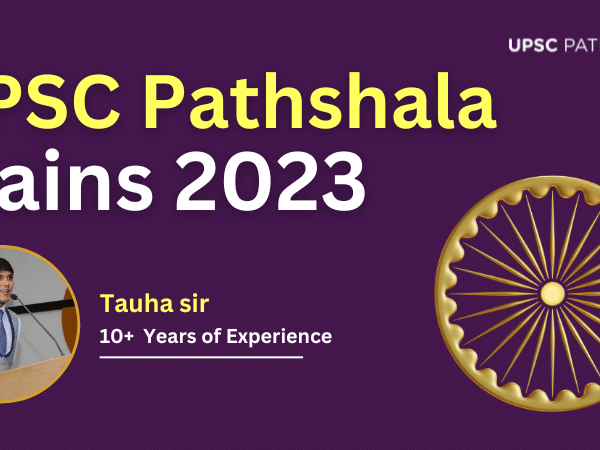1. Consider the following:
1. Areca nut
2. Barley
3. Coffee
4. Finger millet
5. Groundnut
6. Sesamum
7. Turmeric
The Cabinet Committee on Economic Affairs has announced the Minimum
Support Price for which of the above?
(a) 1, 2, 3 and 7 only
(b) 2, 4, 5 and 6 only
(c) 1, 3, 4, 5 and 6 only
(d) 1, 2, 3, 4, 5, 6 and 7
Ans. (b)
Explanation:
Barley, Finger millet (Ragi), Groundnut, Sesamum, rice, wheat are
covered under MSP fixed by GOI.
But Coffee and tea are not covered.
2. With reference to the governance of public sector banking in India,
consider the following statements:
1. Capital infusion into public sector banks by the Government of India has
steadily increased in the last decade.
2. To put the public sector banks in order, the merger of associate banks with
the parent State Bank of India has been affected.
Which of the statements given above is/are correct?
(a) 1 only
(b) 2 only
(c) Both 1 and 2
(d) Neither 1 nor 2
Ans. (b)
Explanation
Oct 2017 Govt committed to infuse %2,11-lakh-crores in PSBs over next 2
years, via Budgetary Support, Recap Bonds, and Market Raising.
Apr 2017; 5 associates of SBI and Bharatiya Mahila Bank (BMB) merged
with SBI.
Statement 1 is wrong.
Capital infusion into PSBs by the govt has NEITHER steadily increased,
NOR decreased in the last decade, It has been irregular.
Statement 2 is correct.
Most bank mergers have been an offshoot of the central bank’s efforts to
protect the financial system and depositors’ money.
A few of them are also driven by the need for consolidation and growth.
Mergers expect weak banks to sell assets, reduce overheads and shut
loss-making branches.
Recent SBI mergers will help SBI optimise its operations and improve
profitability, Integration of treasuries of the associate banks with the
treasury of SBI will bring in Substantial cost saving and Synergy in
treasury operations.
3. Consider the following items:
1. Cereal grains hulled
2. Chicken eggs cooked
3. Fish processed and canned
4. Newspapers containing advertising material
Which of the above items is/are exempted under GST (Good and Services Tax)?
(a) 1 only
(b) 2 and 3 only
(c) 1, 2 and 4 only
(d) 1, 2, 3 and 4
Ans. (c)
Explanation:
The correct answer is C as Fish processed and canned is not exempted from
GST while all other options are exempted.
4. Consider the following countries:
1. Australia
2. Canada
3. China
4. India
5. Japan
6. USA
Which of the above are among the ‘free-trade partners’ of ASEAN?
(a) 1, 2, 4 and 5
(b) 3, 4, 5 and 6
(c) 1, 3, 4 and 5
(d) 2, 3, 4 and 6
Ans. (c)
Explanation:
ASEAN has five free trade agreements (FTAs) with six Dialogue Partners,
namely China, Japan, Republic of Korea, India, and Australia and New
Zealand. All Parties have ratified the FTAAgreements.
5. Which of the following is/are the aim/aims of “Digital India” Plan of the
Government of India?
1. Formation of India’s own Internet companies like China did.
2. Establish a policy framework to encourage overseas multinational
corporations that collect Big Data to build their large data centres within
our national geographical boundaries.
3. Connect many of our villages to the Internet and bring Wi-Fi to many of
our schools, public places and major tourist centres.
Select the correct answer using the code given below:
(a) 1 and 2 only
(b) 3 only
(c) 2 and 3 only
(d) 1, 2 and 3
Ans. (b)
Explanation:
In order to transform the entire ecosystem of public services through the
use of information technology, the Government of India has launched the
Digital India programme with the vision to transform India into a digitally
empowered society and knowledge economy.
Under the Digital India Plan, NII would integrate the network and cloud
infrastructure in the country to provide high speed connectivity and cloud
platform to various government departments up to the panchayat level.
Cities with population of over 1 million and tourist centres would be
provided with public wi-fi hotspots to promote digital cities. The scheme
would be implemented by DoT and Ministry of Urban Development
(MoUD). Hence, only statement 3 is correct.
6. With reference to Pradhan Mantri Kaushal Vikas Yojana, consider the
following statements:
1. It is the flagship scheme of the Ministry of Labour and Employment.
2. It, among other things will also impart training in soft skills,
entrepreneurship, financial and digital literacy.
3. It aims to align the competencies of the unregulated workforce of the
country to the National Skill Qualification Framework.
Which of the statements given above is/are correct?
(a) 1 and 3 only
(b) 2 only
(c) 2 and 3 only
(d) 1, 2, and 3
Ans. (c)
Explanation
Statement 1 is wrong.
PMKVY Scheme will be implemented by M/o Skill Development and
Entrepreneurship through the National Skill Development Corporation
(NSDC).
Statement 2 & 3 are correct and self-explanatory.
7. The Partnership for Action on Green Economy (PAGE), a UN
mechanism to assist countries transition towards greener and more
inclusive economies, emerged at
(a) The Earth Summit on Sustainable Development 2002, Johannesburg.
(b) The United Nations Conference on Sustainable Development 2012, Rio
de Janeiro.
(c) The United Nations Framework Convention on Climate Change 2015, Paris.
(d) The World Sustainable Development Summit 2016, New Delhi.
Ans. (b)
Explanation:
Self explained
8. Which one of the following statements correctly describes the meaning of
legal tender money?
(a) The money which is tendered in courts of law to defray the fee of legal cases
(b) The money which a creditor is under compulsion to accept in settlement
of his claims
(c) The bank money in the form of cheques, drafts, bills of exchange, etc.
(d) The metallic money in circulation in a country
Ans. (b)
Explanation
Legal Tender Money’ Money which has a legal approval behind it and
people are bound by law to accept it in all payments, None of the citizens
can refuse to accept it.
Currency notes and coins are legal tenders.
Cheques drawn on Savings or current accounts, however, can be refused by
anyone as a mode of payment.
Hence, demand deposits and cheques are not legal tenders.
9. If a commodity is provided free to the public by the Government, then
(a) the opportunity cost is zero.
(b) the opportunity cost is ignored.
(c) the opportunity cost is transferred from the consumers of the product to
the tax-paying public.
(d) the opportunity cost is transferred from the consumers of the product to the
Government.
Ans. (c)
Definition of Opportunity Costs
Opportunity cost refers to a benefit that a person could have received, but
gave up, to take another course of action.
For example, if you are a Specialist doctor and you give up your profession
to join Civil Services, that is the opportunity cost that you give up with
respect to monetary gains of being a doctor. You could have earned So
much more as a doctor, but you choose to give that up to achieve something
else that means So much more to you, When people have the opportunity to
get free commodities, the tax-payers are basically paying for it.
Also Read: UPSC 2011 Economics Questions and Answers : A detailed explanation with Solutions
10. Increase in absolute and per capita real GNP do not connote a higher
level of economic development, if
(a) industrial output fails to keep pace with agricultural output.
(b) agricultural output fails to keep pace with industrial output.
(c) poverty and unemployment increase.
(d) imports grow faster than exports.
Ans. (c)
Explanation
An increase in overall GNP or per capita GNP does not adequately reflect the
problem of generating employment opportunities and for reducing economic
disparities which forms the core of economic development.
* For increase in the actual living standards of the masses, much depends on two
factors:
(i) the composition of growing overall GNP or per capita GNP, and
(ii) how benefits of growth are distributed among the population.
Thus, per capita GNP’s main limitation is that it ignores ‘income distribution,
which has an important bearing on the welfare of the people. It is implicitly
assumed in per capita GNP as an indicator of development that each extra rupee
of income is of equal importance whether earned by the rich or the poor.
But ideally this should not be the case, because a growing overall or per capita
GNP may have benefited only the rich, while the share of bottom 30% of
population may not have received the benefits, i.e., poverty of a large section of
the population may not have declined.
Further, if growth has been brought about by the labour-saving technologies in
the production of commodities, employment will not rise and therefore
unemployment may rise instead of falling.
11. Consider the following statements:
Human capital formation as a concept is better explained in terms of a process
which enables
1. Individuals of a country to accumulate more capital.
2. Increasing the knowledge, skill levels and capacities of the people of the
country.
3. Accumulation of tangible wealth.
4. Accumulation of intangible wealth
Which of the statements given above is/are correct?
(a) 1 and 2
(b) 2 only
(c) 2 and 4
(d) 1, 3 and 4
Ans. (c)
Statement 2 is correct.
“Human Capital” refers to the stock of knowledge, skills, habits, Social and
personality attributes, including creativity, embodied in the ability to perform
labour So as to produce economic value.
Statement 4 is correct.
Human Capital is considered as the largest component of ‘intangible wealth’ of
nations.
12. Despite being a high saving economy, capital formation may not result
in significant increase in output due to
(a) weak administrative machinery
(b) illiteracy
(c) high population density
(d) high capital-output ratio
Ans. (d)
Explanation
Layman Explanations
Capital-Output ratio (COR) is the ratio where the ‘capital’ is in the numerator,
and ‘output’ is in the denominator, This ratio/fraction will be high only when the
numerator (capital) has a bigger value than the denominator (output), So, “high
COR” simply means that for a given capital, the amount of output is less, This is
what our question also asks.
13. Consider the following statements:
1. The Reserve Bank of India manages and services Government of India
Securities but not any State Government Securities.
2. Treasury bills are issued by the Government of India and there are no
treasury bills issued by the State Governments.
3. Treasury bills offer are issued at a discount from the par value.
Which of the statements given above is/are correct?
(a) 1 and 2 only
(b) 3 only
(c) 2 and 3 only
(d) 1, 2 and 3
Ans. (c)
Statement 1 is wrong.
Under the RBI Act, the RBI is the
debt manager for both the Central Govt and the State Govts.
Statements 2 & 3 are correct.
There are two types of bills. Treasury Bills and Commercial Bills.
While Treasury Bills (TBills) are issued by the Central Govt; Commercial
Bills are issued by financtal institutions. ¢ T-Bills are govt bonds or debt
securities with maturity of less than a year. They are issued at a discount
and redeemed at the face value at maturity.
They are used by the Central Govt to fulfil its short-term liquidity
requirement upto the period of 364 days.
14. Consider the following statements:
1. Capital Adequacy Ratio (CAR) is the amount that banks have to maintain
in the form of their own funds to offset any loss that banks incur if the
account-holders fail to repay dues.
2. CAR is decided by each individual bank.
Which of the statements given above is/are correct?
(a) 1 only
(b) 2 only
(c) Both 1 and 2
(d) Neither 1 nor 2
Ans. (a)
Explanation
The capital adequacy ratio (CAR) is the percentage of total capital to the
total risk—weighted assets.
CAR = (Total of the Tier 1 & Tier 2 capitals) + Risk Weighted Assets
Also known as “Capital to Risk Weighted Assets Ratio (CRAR)”
, this ratio
is used to protect depositors and promote the stability and efficiency of
financial systems around the world.
Its aim is to prevent commercial banks from taking excess leverage and
becoming insolvent in the process,
Statement 2 is wrong.
It is decided by central banks and bank regulators.
15. Consider the following statements:
1. The Food Safety and Standards Act, 2006 replaced the Prevention of
Food Adulteration Act, 1954.
2. The Food Safety and Standards Authority of India (FSSAI) is under the
charge of Director General of Health Services in the Union Ministry of
Health and Family Welfare.
Which of the statements given above is/are correct?
(a) 1 only
(b) 2 only
(c) Both 1 and 2
(d) Neither 1 nor 2
Ans. (a)
Explanation:
Statement 1 is correct: Various central Acts like Prevention of Food
Adulteration Act, 1954, Fruit Products Order, 1955, Meat Food Products Order,
1973, Vegetable Oil Products (Control) Order, 1947, Edible Oils Packaging
(Regulation)Order 1988, Solvent Extracted Oil, De- Oiled Meal and Edible
Flour (Control) Order, 1967, Milk and Milk Products Order, 1992 etc. were
repealed after commencement of FSS Act, 2006.
Statement 2 is not correct: Ministry of Health & Family Welfare, Government of
India is the Administrative Ministry for the implementation of FSSAI. The
Chairperson and Chief Executive Officer of Food Safety and Standards
Authority of India (FSSAI) have already been appointed by Government of
India. Before the formation of FSSAI, from 1954 onwards Prevention of Food
Adulteration was part of Directorate General of Health Services. After having
detached from the direct administrative control of the Health Ministry, this
authority is holding independent authority and has attained special status.
16. With reference to the provisions made under the National Food Security
Act, 2013, consider the following statements:
1. The families coming under the category of ‘below poverty line (BPL)’
only are eligible to receive subsidised food grains.
2. The eldest woman in a household, of age 18 years or above, shall be the
head of the household for the purpose of issuance of a ration card.
3. Pregnant women and lactating mothers are entitled to a ‘take-home ration’
of 1600 calories per day during pregnancy and for six months thereafter.
Which of the statements given above is/are correct?
(a) 1 and 2 only
(b) 2 only
(c) 1 and 3 only
(d) 3 only
Ans. (b)
Explanation:
Self exlained
17. With reference to digital payments, consider the following statements:
1. BHIM app allows the user to transfer money to anyone with a
UPI-enabled bank account.
2. While a chip-pin debit card has four factors of authentication, BHIM app
has only two factors of authentication.
Which of the statements given above is/are correct?
(a) 1 only
(b) 2 only
(c) Both 1 and 2
(d) Neither 1 nor 2
Ans. (a)
Explanation
Statement 1 is correct and self-explanatory.
Statement 2 is wrong
A chip-pin debit card has 2 factors of authentication; chip present on the card,
and pin that you enter.
BHIM app has 3 factors of authentication’ mobile number, bank account
number, and UPI Pin.
NOTES
In 2015, RBI scrapped 2-factor authentication for merchant transactions below
22000 (no need to enter pin). However, for transactions above 22000, 2-factor
still apply.
18. With reference to India’s decision to levy an equalization tax of 6% on
online advertisement services offered by non-resident entities, which of the
following statements is/are correct?
1. It is introduced as a part of the Income Tax Act.
2. Non-resident entities that offer advertisement services in India can claim a
tax credit in their home country under the “Double Taxation Avoidance
Agreements”.
Select the correct answer using the code given below:
(a) 1 only
(b) 2 only
(c) Both 1 and 2
(d) Neither 1 nor 2
Explanation
Feb 2016 Equalisation Levy introduced in Budget 2016.
* Apr 2018 2560 cr in equalisation levy generated, Both statements are
wrong.
* During Budget 2016 presentation, Finance Minister Arun Jaitley
proposed inserting a new chapter titled ‘Equalisation Levy’ in the Finance
Bill 2016. Thus, it was introduced as per chapter VIII of Finance Act 2016
(NOT as apart of the Income Tax Act),
* NOTES Its primary aim is of levying tax on the income generated by
internet giants from Indian advertisers.
Ans. (d)
19. Consider the following statements:
1. The Fiscal Responsibility and Budget Management (FRBM) Review
Committee Report has recommended a debt to GDP ratio of 60% for the
general (combined) government by 2023, comprising 40% for the Central
Government and 20% for the State Governments.
2. The Central Government has domestic liabilities of 21% of GDP as
compared to that of 49% of GDP of the State Governments.
3. As per the Constitution of India, it is mandatory for a State to take the
Central Government’s consent for raising any loan if the former owes any
outstanding liabilities to the latter.
Which of the statements given above is/are correct?
(a) 1 only
(b) 2 and 3 only
(c) 1 and 3 only
(d) 1, 2 and 3
Ans. (c)
Explanation
Apr 2017 FRBM Review Committee under N.K. Singh Submitted its
report.
Statement 1 is correct. Recommendations of N.K. Singh Committees
(i) Reduce Fiscal Deficit to 2.5% of GDP by 2022-23.
(ii) Reduce Revenue Deficit to 0.8% of GDP by 2022-23.
(iii) Debt-to-GDP ratio of 60% overalls 40% for central govt, 20% for the
state govts together by 2022-23.
Statement 2 is wrong: As per latest data (Feb 2018) by Dept. of Economic
Affairs, Central Govt has domestic liabilities of 46,1% of GDP, and states’
liabilities are 23.7% of GDP.
Statement 3 is correct.
Article 293(3): A State may not without the consent of the Govt of India
raise any loan if there is still outstanding any part of a loan which has been
made to the State by the Gol or by its predecessor Govt, or in respect of
which a guarantee has been given by the Gol or by its predecessor Govt.
20. Consider the following statements:
1. The quantity of imported edible oils is more than the domestic production
of edible oils in the last five years.
2. The Government does not impose any customs duty on all the imported
edible oils as a special case.
Which of the statements given above is/are correct?
(a) 1 only
(b) 2 only
(c) Both 1 and 2
(d) Neither 1 nor 2
Ans. (a)
Explanation
Sep 2017: ICRA report: India still highly dependent on edible oil imports.
According to ICRA, India occupies a prominent position in the world
oilseeds industry with contribution of around 10% in worldwide
production.
Statement 1 is correct.
But the demand of edible oils (extracted from oilseeds in addition to palm
oil) is Significantly higher than the domestic production, leading to
dependence on imports (60% of requirement), Share of imports to reduce
to 55% by FY22.
Statement 2 is wrong.
Govt imposes customs duty on edible oils to safeguard the interests of
domestic oil crushing industry.
21. Which one of the following links all the ATMs in India?
(a) Indian Banks’ Association
(b) National Securities Depository Limited
(c) National Payments Corporation of India
(d) Reserve Bank of India
Ans. (c)
In 2009, National Payments Corporation of India (NPCI) was granted
Certificate of Authorization for operation of National Financial Switch (NFS)
ATM Network, NES is the largest interoperable ATM network in the country
and it manages more than 95% of the domestic interbank ATM transactions.
22. Consider the following statements:
1. Aadhaar card can be used as a proof of citizenship or domicile.
2. Once issued, Aadhaar number cannot be deactivated or omitted by the
Issuing Authority.
Which of the statements given above is/are correct?
(a) 1 only
(b) 2 only
(c) Both 1 and 2
(d) Neither 1 nor 2
Ans. (d)
Statement 1 is wrong.
Aadhaar card CANNOT be used as a proof of citizenship or domicile.
UIDAI issues Aadhaar to the “residents” of India, (A citizen is
eligible for all entitlements, including voting rights: whereas a
resident can be a foreign national.) An NAI or a foreign national, if
has Stayed in India for more than 182 days, will be eligible to apply
for Aadhaar.
Statement 2 is wrong.
An individual’s Aadhaar number may be “omitted” permanently or
deactivated temporarily by UIDAI.
Also Read : UPSC Prelims 2015 Economics Questions: Check Out the Article to Gain Insights!







